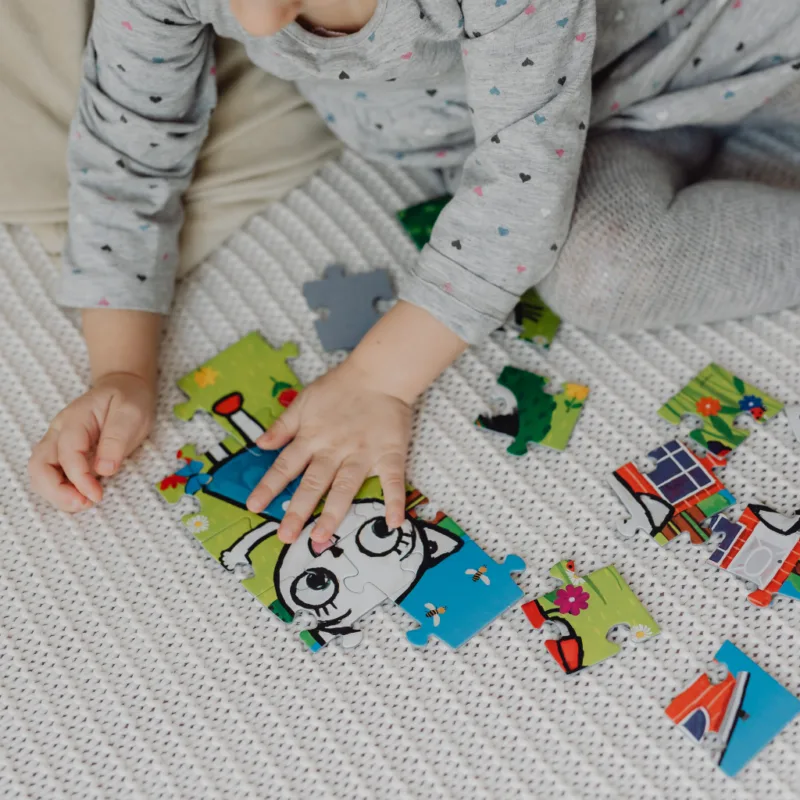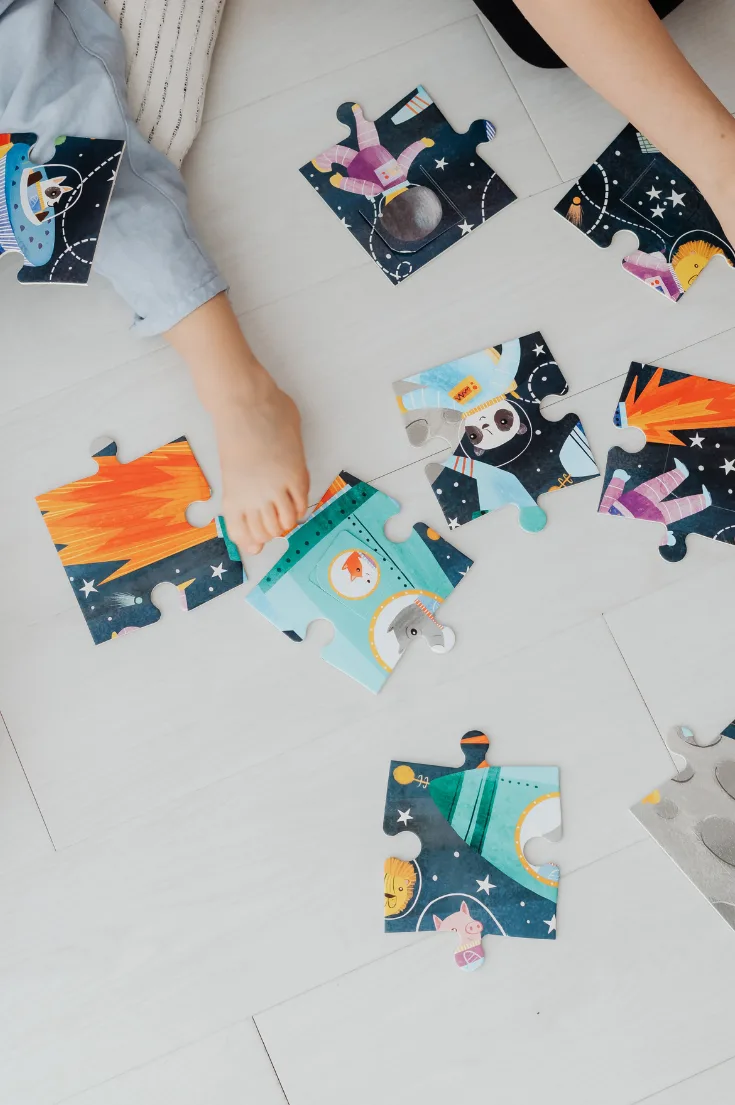I earn commissions from my affiliated links. Please see my disclosure policy for more details.
Some children find the transition from wooden puzzles with large chunky pieces that fit snuggly into a single place to puzzles with smaller pieces that can be put together in many ways easy and others find it puzzling.
Those that find it easy to see the big picture of what the puzzle looks like before it is taken apart or the picture on the lid can just piece the puzzle back together.

Those that are puzzled by the smaller piece puzzles may need some guidance as to how this type of puzzle fits together.
My son is a detail guy. He gets focused on getting the pieces to fit together regardless of their shape or details. When the puzzle doesn’t seem to work the way he thinks it should, he gets frustrated and just wants to put it away.
This is a problem! The puzzle pieces are still spread out all over the table and the puzzle frame is empty.

The first thing my son needed to complete the puzzle was a reminder of what the puzzle looked like. Many of the cardboard puzzles we have don’t have a picture of what the puzzle should look like when it is completed.
Helping Kids Use Picture Clues to Complete a Puzzle
Simply taking a digital camera picture of the puzzle when it is whole and then printing it out to use as a visual reference really helped him have an idea of what he needed the completed puzzle to look like when it was done.
Next, he needed to learn to be a puzzle detective. Each piece of a puzzle contains various clues that can help someone place it into the puzzle.

Here are the clues he learned to look for:
- Does it have a flat or curvy side?
- If the answer is yes, then it probably will go on the edge of the puzzle.
- Which side of the piece is flat or slightly curvy?
- The part of the piece that is flat or curvy will tell you which side of the puzzle the piece goes on. If the piece has a corner, it probably goes in the corner of the puzzle.
- Once we complete the outside edge of the puzzle, we moved on to another set of clues.
- Are there any clues on a frame that will help us how which pieces go where? Clues like colors, pictures, or designs.
If that seemed to be too hard for a particular puzzle, I asked my son put the piece that looked like they had details that match what he could see in the picture we had of the picture whole above puzzle if they looked like the top of the puzzle, below the puzzle if they looked like they belonged at the bottom of the puzzle and on the outside of the side that they looked like they belonged on.
Once the pieces were sorted out, we started to work on the puzzle one section at a time. Sometimes he would find one area easier to work on than another. Usually, he ended up wanting to work on the top or bottom first.
As he felt more comfortable at using picture clues and being a puzzle detective, doing puzzles became more fun.
All it took was teaching him a few ways to attack the puzzles and questions to ask himself as he was completing them.
Deirdre Smith writes/owns JDaniel4’s Mom. After twenty years as an elementary school and technology resource teacher in Northern Virginia, she became a stay-at-home mom in upstate South Carolina. She and her husband are the proud parents of J. Daniel the 4th and the blog is named for him. The blog features ways my four year old and I are exploring learning, crafting, creating healthy meals and living life to its fullest. Deirdre can also be found on twitter as @jdaniel4smom and on her blog’s FB page.
